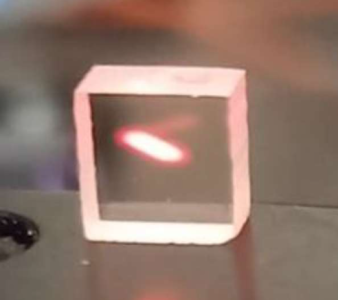Optical Cryocooling for Space Applications

Almost all types of satellite sensors are actively or passively cooled, in many cases down to cryogenic temperatures. The goal is to suppress thermal noise in order to achieve the highest possible signal-to-noise ratio. Thus, cryocoolers are critical components in satellite systems, and in many cases key enablers. For instance in Earth Observation (EO) systems, mechanical cryocoolers are preferred over passive ones. The reason is that passive radiators induce constraints on satellite orbit and attitude. This choice is often made to the cost of mechanical vibrations and increased electromagnetic perturbations induced by the motors. For small spacecrafts, microvibrations are difficult to suppress; this may cause line-of-sight jitter and limit optical system resolution. As a result, reduction of microvibrations has become one of the main challenges in the development of new spacecraft systems with ever increasing data requirements. Several alternative cryocoolers readily exists; Joule Thomson cryocoolers with sorption compressors and Turbo-Brayton cryocoolers, for instance. However, while vibrations in these cryocoolers are significantly suppressed at high frequencies (for Joule Thomson cryocoolers) and low frequencies (Turbo-Brayton cryocooler), they cannot be considered as truly vibration- free. In addition, Joule-Thomson cryocoolers require precooling and are therefore of limited capability as a stand-alone cooler. Truly vibration-free solutions include passive coolers, cryogenic fluid storage, and thermo-electric coolers. They all have limitations, respectively on satellite attitude, mission duration, and achievable temperatures. Despite significant improvements in the suppression of microvibrations, alternative truly vibration-free cryogenic cooling technologies are needed. This has been expressed for instance in the roadmap on space technology demands from the European-wide space sector conducted by ESA, the European Space Technology Harmonisation Process. One of the main driving forces is the growing market for high quality satellite data, serving a myriad of economic, scientific and societal goals. Whereas this trend has its origin in traditional, government funded space programs, the market is undergoing an exponential growth in number of, and activities by New Space technology companies. In addition to microvibration cancellation, the New Space trend will also require smaller, cheaper and more reliable cryocoolers. Hence miniaturization, cost reduction and reliability are also key challenges. The proposed Early Technology Development activity addresses all these challenges by investigating a promising approach of optical cryocooling.
